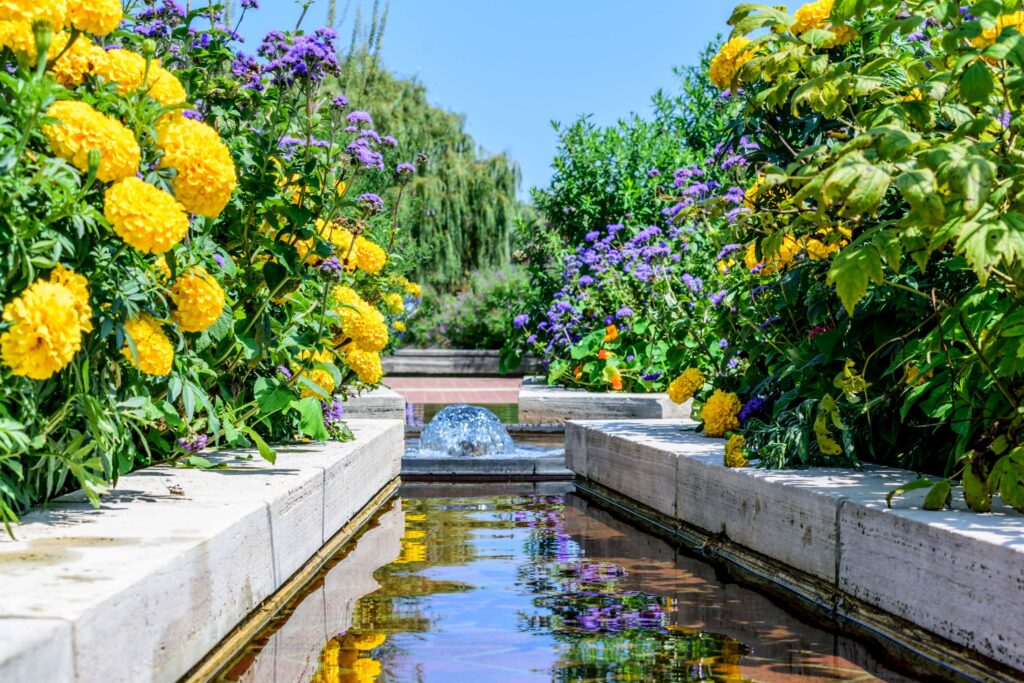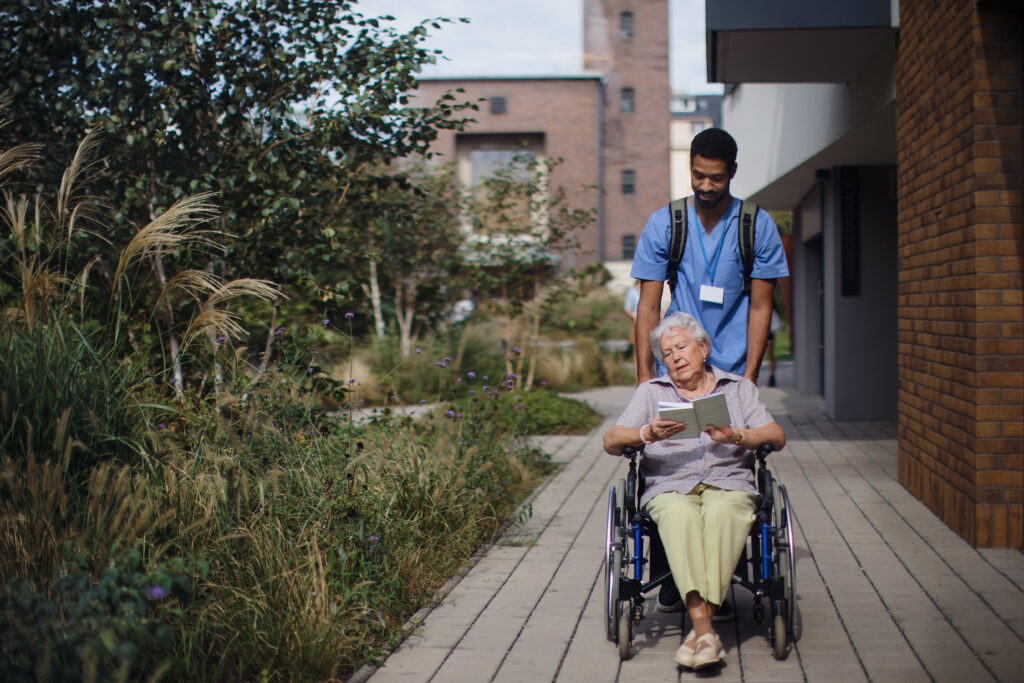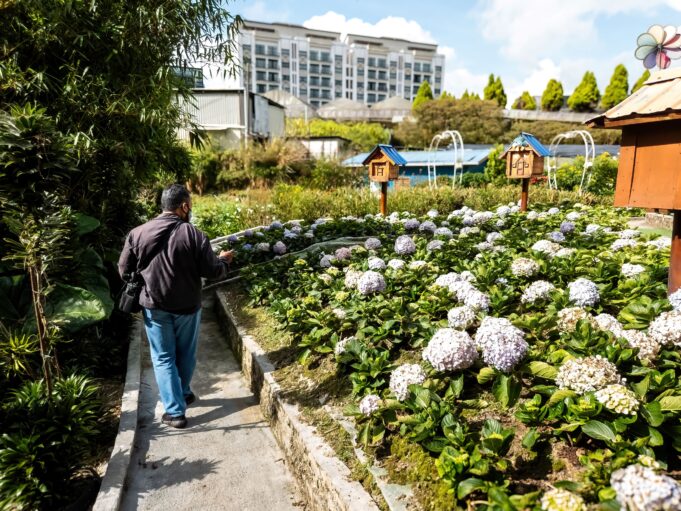Hospital gardens play a vital role in improving the physical, emotional, and psychological well-being of patients, staff, and families. Research continues to show how access to nature reduces stress, fosters healing, and boosts resilience in high-stakes environments like hospitals. From quiet corners for reflection to expansive rooftop gardens, these spaces are proving essential for bringing sterile healthcare facilities into places of holistic care. For facilities managers, the task of integrating these natural sanctuaries is both a challenge and an opportunity to redefine what modern hospitals can be.
How Nature Heals: The Science Behind Hospital Gardens
The benefits of green spaces in healthcare settings are rooted in well-established science. Hospitals with therapeutic gardens create environments that nurture both the mind and body.
Studies have shown that access to nature significantly reduces stress and anxiety levels, not only for patients but for staff and visitors too. Viewing or interacting with greenery can lower cortisol levels and increase feelings of calm and relaxation. This is critical in hospitals, where high stress is the norm.
Additionally, green spaces have been directly linked to faster recovery rates among patients. Exposure to natural elements has been shown to reduce the perception of pain, improve immune system function, and even shorten hospital stays. This phenomenon, often called “green therapy,” is backed by extensive research showing that nature has tangible healing effects.
Hospital gardens also support healthcare workers, whose demanding roles frequently lead to burnout. Green environments provide restorative spaces that improve focus, reduce mental fatigue, and increase overall job satisfaction. By creating opportunities for healthcare professionals to recharge, hospitals can enhance both staff well-being and performance.
For families, these gardens offer vital spaces for respite and connection during emotionally difficult times. A simple walk through a garden or sitting quietly in a green corner can provide the mental reset needed to face challenging days.
Key Features That Make Hospital Gardens Work
Not all hospital gardens are created equal. The most effective healing spaces incorporate design elements that engage the senses, prioritize accessibility, and blend seamlessly with hospital operations.

Engaging the Senses: Multisensory features like textured pathways, fragrant plants, and soothing water elements can elevate the therapeutic experience. These features help patients, visitors, and staff find moments of mindfulness in otherwise stressful environments.
Accessibility Is Non-Negotiable: Universal design ensures these spaces are welcoming for everyone, including patients with limited mobility or those using wheelchairs. Wide, smooth paths, shaded seating and raised garden beds are key features that support inclusivity.


Maximizing Space: Urban hospitals often face spatial constraints, making rooftop gardens and vertical green walls an innovative way to bring nature into dense, built-up environments. These designs ensure that every available square foot is utilized for health and well-being.
Encouraging Community Connection: Community gardens, particularly those that involve patients, staff, and volunteers, have gained popularity. Some hospitals use these gardens to grow vegetables for their cafeterias, creating a sense of purpose and connection for everyone involved.

Real-World Examples of Healing Gardens
Many hospitals are already integrating green spaces into their designs. These examples demonstrate the potential of therapeutic gardens:
- Singapore’s Khoo Teck Puat Hospital combines biophilic design principles with lush, accessible green spaces. The gardens throughout the hospital campus not only help patients heal but also attract local wildlife, creating a vibrant and inspiring environment.
- The Shirley Ryan AbilityLab in Chicago has rooftop gardens designed for physical therapy. Patients recovering from injuries practice mobility exercises in these restorative spaces, blending therapy with the calming influence of nature.
- Legacy Emanuel Medical Center in Portland features an award-winning therapeutic garden designed for reflection and relaxation. With its accessible pathways, native plants, and serene water features, it offers a tranquil escape for patients, families, and staff alike.
Challenges in Creating and Sustaining Green Spaces
Despite their benefits, therapeutic hospital gardens come with challenges. Facility managers must navigate these hurdles to ensure these spaces thrive.
Maintenance Requires Commitment
Keeping hospital gardens lush and inviting demands consistent resources, particularly in climates with harsh weather. Choosing low-maintenance plants and sustainable irrigation systems can help mitigate these issues.
Space Constraints Are Real
Urban hospitals, which often have limited land, must think creatively to incorporate gardens. Rooftop spaces and vertical gardens offer innovative solutions but require careful planning and investment.
Measuring Impact Can Be Tricky
Demonstrating the tangible benefits of hospital gardens is an ongoing challenge. Collaborations with researchers to collect data on recovery times, stress reduction, and staff satisfaction can provide the necessary evidence to justify the costs.
A Vision for Greener Hospitals
Hospital gardens represent an acknowledgment that healing is not just about medicine and technology. It is also about the environment in which care is provided. These green spaces create moments of calm in chaotic surroundings, helping patients heal faster, supporting exhausted caregivers, and providing solace to families in times of distress.
As hospitals face increasing pressures to deliver better outcomes while addressing staff burnout and patient satisfaction, therapeutic gardens offer a powerful solution. They are a testament to how nature, thoughtfully integrated, can transform sterile institutions into spaces of hope and healing.
Sources
Design guidelines for healing gardens in the general hospital
Green Therapy: How Does Nature Contribute to Healing Hospitalized Patients?
Growing Research Supports Benefits Of Healing Gardens
Inside the hospital gardens that give respite from a world of ills
The Healing Power of Green: Green Roofs and Vegetable Gardens Transform Medical Campuses in Colorado






